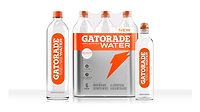Warehouse
The future of forklifts
Fulfilling retailer needs and consumer demands with new forklift technology

Image courtesy of Swanson Russell
In the 2005 family comedy “Yours, Mine & Ours,” — a remake of the 1968 original — a couple played by Dennis Quaid and Rene Russo get together, and between the two of them, they have 18 children. In one scene, while out shopping for home renovation supplies, the couple’s young twin boys stumble upon a forklift. The entire scene is every parent’s worst nightmare: the boys, who can’t figure out how to stop the forklift, wreak havoc on the hardware store. Luckily, no one was hurt. And, luckily, it was just a Hollywood fabrication.
In the warehouse setting, and not in movie set hardware stores, many safety measures are in place to ensure the protection of others, as well as forklift drivers. Mark Koffarnus, major accounts manager at Greenville, N.C.-based Yale Materials Handling Corp., considers safety to be a culture, not an outcome.
“Safety is everyone’s job and must extend across operations and the supply chain,” Koffarnus says. “A culture of safety starts with instituting a strong operator training program. We recently launched a new series of videos as part of the new Yale Operator Training Program, which fulfills most truck-related topics in the formal instruction component of OSHA lift truck certification requirements.”
Moreover, Yale has equipment-specific orientation videos and virtual reality training experiences, Koffarnus notes. Technology can be used as an additional layer or tool for companies to manage both equipment and operator behavior, he says.
“For example, telemetry systems make critical maintenance data accessible while also providing alerts and fault codes related to hazardous driving behaviors, such as excessive speed or impacts,” he explains. “Having access to this kind of data can help organizations to remediate problem areas and reinforce best practices to promote safety.”
Tim Rice, product manager supervisor for Greene, N.Y.-based The Raymond Corp., agrees that technology can provide innovative training opportunities — which also can assist in “attracting new generations, educating new and existing forklift operators more efficiently and increasing employee retention rates.”
“Advancements in training have not only revolutionized warehouse operational efficiency, but also played a critical role in boosting operator confidence and reinforcing proper operator behaviors before they even set foot on the facility floor,” Rice says. “Our forklift operator training solutions can help ease the burden, helping to protect your employees, equipment and materials with a comprehensive and immersive set of smart training solutions that may also assist with OSHA compliance.”
Yale’s Koffarnus adds that updates in technology also are allowing for lift trucks to collect performance data so warehouse managers can determine how efficient the fleet is, as well as ensure safety. Proximity sensors can give operators and pedestrians “new levels of awareness,” he says.
“Technologies use data from the truck, and in the case of our Yale Reliant solution, its environment, to help reinforce lift truck operating best practices and support operator awareness,” he explains. “The solution triggers dynamic alerts, promotes proper operating protocols and automatically adjusts lift truck performance based on proximity to pedestrians and obstacles, load weight, equipment status and location-specific rules — all while keeping operators in control of the truck.”
All about automation
With recent industry surveys showing that the adoption of robotic lift trucks (RLTs) has increased 14% during the past year, Yale’s Koffarnus notes that many warehouses are shifting toward the use of RLTs.
Although not every situation calls for RLTs, advanced technology allows for RLTs to accommodate “a range of horizontal transportation and vertical storage tasks” in various environments, Koffarnus explains.
“They’re especially well-suited to handle repetitive tasks and long runs — a valuable characteristic considering many customers want to automate as much as they can due to the challenges of finding applicants to fill open positions and high turnover in warehousing,” he says. “In particular, RLTs are making an impact in workflows where their consistent, efficient performance shines, such as moving beverage raw ingredients from receiving or staging to put-away in racking, or replenishing manufacturing lines with raw ingredients picked from storage.”
Raymond Corp.’s Rice notes that many warehouses are seeing people and automation coexist to achieve the needs of specific operations. It’s true specifically for automation and automated products that call for an investment, and as many companies enforce “a hybrid work style to help increase productivity while keeping costs consistent,” he says.
“The biggest thing automation does is free up high-value employees to transition to other locations within an operation to complete more variable and value-add jobs,” Rice adds.
Going greener
As more and more companies aim to reduce their environmental impact, experts note that the forklift sector is no exemption.
Rice notes that the biggest area with forklifts where sustainable measures are being taken is with the battery systems, many of which are being switched to lithium-ion and other alternative energy solutions.
“Utilizing onboard, long-lasting and fast-charging solutions, such as lithium-ion batteries, eliminates the need to buy or store spare batteries, which maximizes valuable warehouse space and cost savings,” Rice explains. “Lithium-ion performs great in fast-paced, high-throughput applications, providing the energy efficiency and flexibility needed to ensure the equipment has enough power for the entire shift.”
Another way lift truck development is moving toward sustainability is through electrifying entire fleets, Yale’s Koffarnus notes.
“Switching from trucks powered by lead-acid batteries to ones powered by hydrogen fuel cells can help busy warehouses serve consistent, growing demand, thanks to longer lift truck run times, increased throughput and additional floor space to keep up with SKU proliferation,” he says.
Joe Calhoun, director of off-road business development at the Propane Education & Research Council, notes that propane, a clean energy source, “is only getting cleaner.” Propane can be used to power forklifts, which can help an operation reduce overall emissions, he says.
“Compared with electric, propane can reduce sulfur oxide (SOx) emissions by 76% and, compared with diesel forklift engines, propane forklift engines can produce up to 97% fewer hydrocarbon and nitrogen oxide (NOx) emissions — without any drop-off in payload or power,” Calhoun says. “More and more pressure is being put on material handling operations to clean up the air and be more sustainable. Propane offers a clean, reliable energy source that is non-toxic to air, land and water resources.”
Comfortability is key
As forklift operators spend a majority of their shift in the lift trucks, experts note that operator comfort can further aid warehouse efficiency.
Raymond Corp.’s Rice notes that operations should utilize technologies and equipment that is “operator-friendly and ergonomic to increase worker retention and productivity.”
Especially with labor shortages, operations need to ensure operator comfortably and address ergonomic concerns, Rice says.
“When operators are working on heavy-duty and high-throughput applications, a comfortable forklift with intuitive, easy-to-use controls and a roomy operator compartment is important — especially for long hauls,” he explains. “The Raymond Corp. designs forklifts with the ultimate operator comfort and ergonomics in mind. From larger operator compartments to ergonomically placed controls, we strive to reinforce best practices and keep our operators comfortable and feeling their best for the duration of their shift.”
At Columbus, Ind.-based Toyota Material Handling, the company always is looking for new ways to improve operator comfortability, notes Brian Egloff, director of engineering. The process starts by looking at the ergonomics of current models and assessing where positive improvements can be made, he says.
“We consider the operator’s ease of use and their ability to operate efficiency as one of the very first steps in the design process,”Egloff explains “This includes ingress and egress, and driving comfort in forward and reverse, among other items. Our design process ensures we stay very intentional trying to make continuous improvements in these areas.”
Lifting up the beverage industry
When it comes to consumer demand, beverage operations face various challenges, which also can put more stress on delivery time, experts note.
Yale’s Koffarnus notes that today’s beverage companies are storing and transporting a larger selection of SKUs “to satisfy a greater desire for choice, and also meet elevated expectations for that larger selection to be consistently in stock.”
“Operations can use lift trucks to respond to these challenges,” he explains. “For instance, certain equipment can enable variable height picking processes that increase the number of pick faces so that warehouses can accommodate more SKUs and operators have efficient access to fast-moving ones.”
Forklifts and other lift trucks can speed up the picking process and get orders out in less time, “especially those with productivity-enhancing designs that provide greater maneuverability,” Koffarnus says.
Bill Byrd, senior sales manager at Toyota Material Handling, notes that some companies might require more diverse material handling, to keep up with SKU proliferation.
“We are seeing beverage pallets increasing in weight as more and more energy drinks are being developed and sold in the industry,” Byrd says. “Both the size of the can and the weight are increasing, requiring more diverse material handling options.”
No matter what the next beverage trend will be, forklifts and RTLs will be there to ensure that consumer and distributor needs are met.
Looking for a reprint of this article?
From high-res PDFs to custom plaques, order your copy today!







